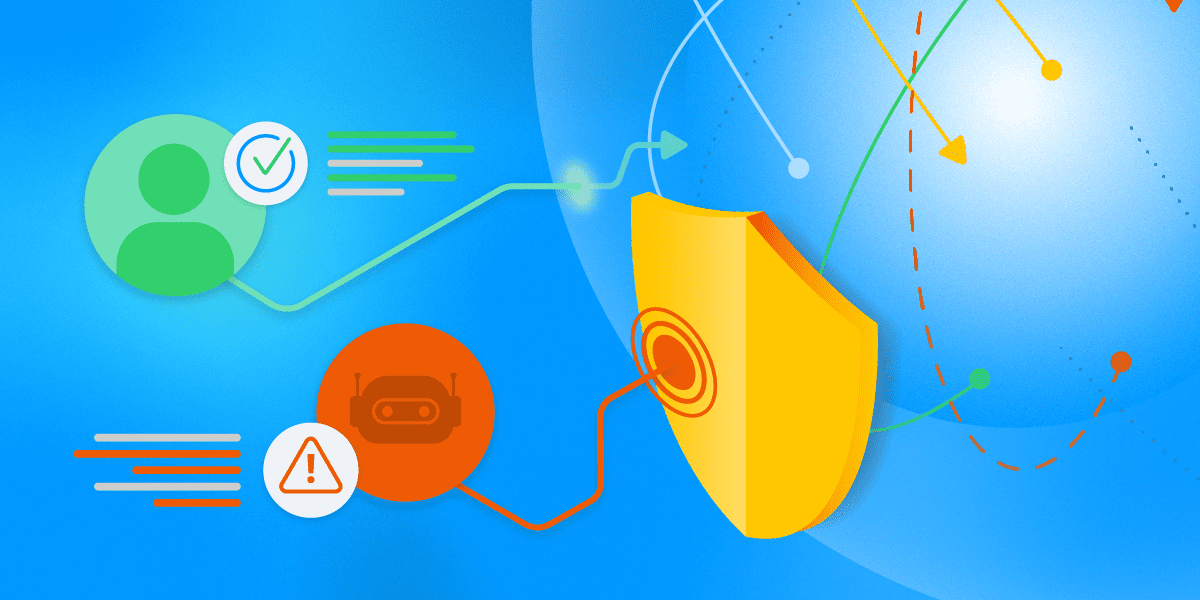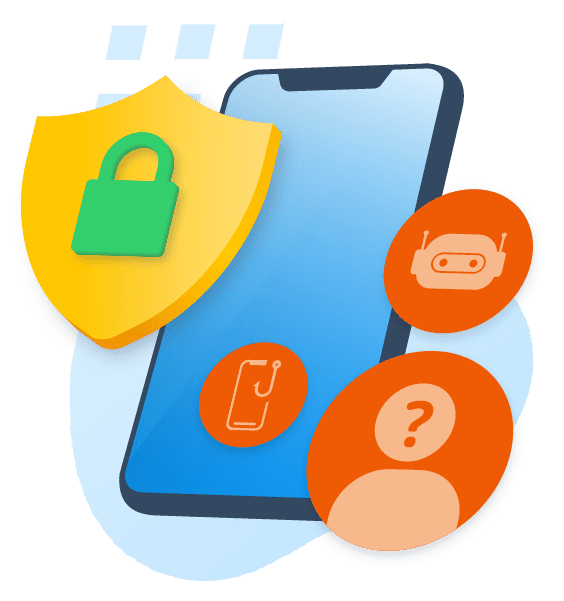How to Protect Your VoIP Communications & Customers from Phone Fraud
There's a significant need for better phone fraud prevention and detection tools in the industry. We hear it every day. AVOXI is committed to providing businesses (and their customers) a better, more secure calling experience. See how we're actively investing in our technology to prevent, detect and stop telecom fraud.

Phone fraud is a big deal. Businesses across the globe lost an estimated $40 billion USD to telecom fraud in 2021.
In short, phone fraud is an expensive problem for everyone. Especially for businesses that rely on secure communications to serve their customers well.
It’s important to look inward at the technology you use to prevent telecom fraud, but also to ensure you’re working with a cloud-based communications partner who is doing all they can to prevent fraud on your customers’ behalf as well.
In this article, we’re talking about phone fraud and how to protect your communications so you can better safeguard your customers’ data as well as your bottom line.
Telecom fraud is targeting global businesses
Unfortunately, as techniques for securing phone networks become more advanced, fraudsters intent on misusing others’ networks for personal gain become savvier as well.
To stay ahead of their game, it’s necessary to familiarize yourself with common types of phone fraud. Six of the most often-reported communications fraud practices affecting businesses today are:
- Robocalls
- Caller ID Spoofing
- Toll Fraud
- Vishing
- Telephony Denial of Service (TDoS)
- PBX Hacking
These six common SIP threats and phone scams are just some of the security issues IT leaders should be aware of. It’s a good idea to devote time to keeping up with toll fraud and phone fraud monitoring best practices so your business can operate with as few interruptions as possible.
Your customers are at risk too
It’s not just businesses that can become phone fraud victims. Bad actors also deploy the scams above to reach unsuspecting end-users and extract sensitive information for financial gain.
The FTC estimates that in 2021 alone, individuals were conned out of $823 million USD collectively by telecom fraudsters. This equals a median of $1,200 lost per phone scam and $900 per text-based incident.
Telecom fraud can indirectly damage your brand’s reputation and bottom line by frustrating legitimate callers who can’t get through because of DOS attacks or are bombarded by a series of robocall takeovers.
Trained call agents may be able to shut down fraudulent callers before they cause any financial damage, but the time those agents spend confirming their identity equals lost productivity and irritated customers waiting to speak with the agent about their very real support issues or purchase intent.
These longer call waiting and call handling times caused by people whose sole purpose is to tie up your VoIP network manifest in lower customer satisfaction scores and revenue metrics. And if customers lose confidence in your brand’s ability to confidently handle your call volume and deliver top-notch service, they may choose to take their business elsewhere.
How CPaaS solutions are tackling phone fraud head-on
Using a CPaaS offers built-in protection and stopgaps to prevent telecom fraud. When you successfully stop VoIP fraud activity, you set your business up to retain more customers, troubleshoot ongoing issues more efficiently, and boost your company’s overall productivity. When fraud is mitigated, your teams can focus more on their core responsibilities.
Below are four ways cloud communication providers enable seamless communications through VoIP fraud management and prevention solutions:
1. Session border controllers
The most important benefit of using a Session Border Controller (SBC) with a CPaaS is enhanced security and VoIP fraud prevention.
An SBC only allows authorized calls or sessions to happen. You can program your phone network policies into an SBC. Once you’ve set your technology’s ground rules, the SBC will prevent several unwarranted attacks, including robocalls, DoS and DDoS attacks, and spam over IP telephony (SPIT) attacks.
2. Call blocking
Call blocking can prevent robocalls, ward off vishing attempts and minimize recipients from falling victim to call spoofing. CPaaS platforms almost always offer call blocking as a feature available on all user dashboards so individuals can prevent future calls from unwanted numbers. System administrators can ban blocks of phone numbers from interacting with their network. They can also program policies for automatically blocking calls that meet a certain threshold of suspicious activity.
3. Call traffic analysis
Tracking call patterns can alert you to telecom fraud by exposing departures from normal activity. Call record analysis generally includes monitoring call frequency, geographic data, call length, call cadence and dayparting. Sometimes considered a secondary fraud prevention measure because evidence only appears after a call is complete, CPaaS providers offer these call quality performance solutions as a way for admins to take control over their voice performance and ensure the best experience for customers.
4. Call routing
Using call routing to minimize fraud means directing known fraudulent calls through validation points before completing them. If the call does not meet authentication standards, it’s not connected to the end-user. Call routing can prevent robocalls, vishing, toll fraud and caller ID spoofing. Call routing works best when paired with other fraud prevention measures, like call pattern tracking and call blocking, to shut down fraud as quickly as possible.
AVOXI's commitment to VoIP security
The best approach to VoIP fraud detection and prevention is multilayered. AVOXI dedicates a large portion of our time and resources to call fraud prevention. Our commitment to providing superior coverage across more than 170 countries means doing everything we can to minimize VoIP fraud so you can maximize your ability to reach customers. Here’s how we’re protecting our networks and your global audiences:
Product integrity
Telecom security starts with a secure product. Our cloud communications platform employs standard security measures including PCI compliance and multiple layers of encryption. AVOXI continually invests resources into improving our cloud communications software to keep it up-to-date with current security requirements based on real-world trends. We constantly examine our network to find vulnerabilities to address while working with the customers to bridge any security gaps that pose particular problems in their market.
Enhanced geo-redundancy
AVOXI operates on a worldwide network with multiple servers and access points to ensure minimal disruption to your communications. Enhanced geo-redundancy means better protection against regional attacks and attempted fraud. Our Tier 1 data centers are strategically positioned across the globe to create redundant PoPs so that if hackers, natural disasters, or accidents disconnect one corner of the network, backup servers take over - and you can still support your customers.
Encrypted communications
AVOXI uses SIP protocol technology to help small to large businesses manage their international VoIP communications. The transfer of real-time communications over the internet relies on a secure SIP trunking environment.
Transport Layer Security (TLS) is the most powerful SIP layer to authenticate voice and media packets, moving communications continually between the client and AVOXI servers. Combined with extended efforts for security, including a firewall and SBC, you can be sure that your existing PBX phone system is optimized and secured against suspicious activity.
The same defense measures are found in our mobile capabilities. AVOXI offers complete SMS message security by encrypting text messages as they travel across the AVOXI global cloud network. Encryption and access settings are password protected on the platform.
Cybersecurity team proactively monitoring traffic
Technologies like firewalls and VPNs protect your network from fraudulent activities, but it's the cybersecurity professionals - like the team at AVOXI - who anticipate and defend customers’ systems from emerging threats.
We invest in our people and tech to offer the resources our customers need to minimize phone fraud. We ensure our teams stay up-to-date about VoIP fraud detection techniques and know what types of tools our customers need to ensure regulatory compliance. We offer routine security training for customers as well and encourage them to report suspicious behavior so we can work together to prevent attacks.
Voice quality monitoring tools
Our proprietary traffic analysis algorithms continuously monitor our customers’ call behavior to detect attack patterns and identify suspicious activity that merits action. AVOXI’s Call Insights Dashboard has a phone fraud reporting component that helps our customers proactively monitor traffic irregularities in MOS, jitter, latency, and other common call quality issues for evidence of toll fraud. Our cloud-based platform automatically opens a support case with our 24/7 support teams when they detect poor call quality.
STIR/SHAKEN
AVOXI complies with the FCC’s required use of STIR/SHAKEN protocols by actively deploying these protocols to secure our global VoIP network against caller ID spoofing. STIR (Secure Telephony Identity Revisited) protocol adds a digital certificate to the SIP header created when calls initiate on your VoIP system. Our network compares the certificate to your known connection IDs and verifies the connection. Only when our network authenticates the initiated connection does it allow the call to reach the end-user.
SHAKEN (Signature-based Handling of Asserted information using toKENs) is a similar process for PSTN connections like cell phones and landlines. AVOXI works with its local PSTN partners to maintain CNAM caller ID databases to offer our clients the most complete and accurate caller ID information possible.
Together, our STIR/SHAKEN processes reduce the chance of robocalls reaching your customers. Your clients can accept calls securely in the knowledge that your communications are constantly authenticated and accurately represent your organization.
It begins with a security-first mindset
Preventing phone fraud requires a multilayered approach. Your business must deploy the necessary equipment and security technology to respond to present telecom attacks while warding off future ones. You must also work with a team of highly knowledgeable telecom security professionals who can help protect your business’s time and revenue while shielding customers from falling victim to individuals who try to steal their assets. Finally, you must actively monitor your networks to know what normal activity looks like and what constitutes a potentially fraudulent departure from that norm.
AVOXI’s team is well-versed in telecom security and takes a proactive approach to prevent VoIP fraud. Our redundant networks, use of the latest encryption and secure protocols, and partnerships with customers and vendors ensure our cloud communications platform remains the most secure and protected communications on the market.

Featured Resource
Telecom Security Toolkit
A set of free resources for detecting and preventing security risks in your communication networks and technology.

Safeguard Your Telecom Systems
Phone fraud is a big deal. Learn from security experts on how to reduce vulnerabilities and prevent fraud before it starts.
